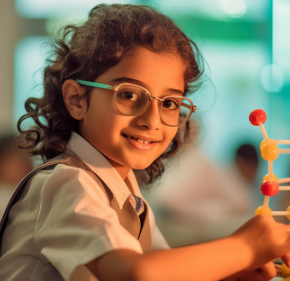Currently Empty: $0.00

Building the Future: A STEM Smart City by an 11-Year-Old Changemaker
At just 11 years old, Riya, a student from an underserved community, has designed a visionary smart city that embodies innovation, sustainability, and inclusivity. Armed with basic STEM education and boundless creativity, she developed her project as part of a community initiative to nurture 21st-century skills in underprivileged children.
Riya’s smart city prioritizes Sustainable Development Goals (SDGs) such as clean energy (SDG 7), climate action (SDG 13), and sustainable cities and communities (SDG 11). Her blueprint integrates renewable energy sources, including solar panels and wind turbines, to power homes, schools, and public spaces. A rainwater harvesting system is at the heart of her design, ensuring water conservation and access to clean water (SDG 6).
The city also promotes green transportation with electric buses and solar-powered bikes. Parks and vertical gardens dot her model, reflecting a commitment to enhancing urban biodiversity. To address the digital divide, Riya included community tech hubs where children and adults alike can access the internet and participate in free digital literacy programs (SDG 4).
Creating this project honed Riya’s critical thinking, problem-solving, and creativity—core 21st-century skills. She worked collaboratively with her peers to simulate real-world urban challenges, like managing waste or reducing carbon footprints, while coding and programming sensors to create a functional prototype.
Riya’s smart city isn’t just a model; it’s a powerful statement about the untapped potential in underserved communities. Projects like hers demonstrate how access to STEM education can inspire young minds to address global challenges. With continued support, Riya dreams of scaling her ideas to create real-world impact, proving that age and background are no barriers to driving meaningful change.

